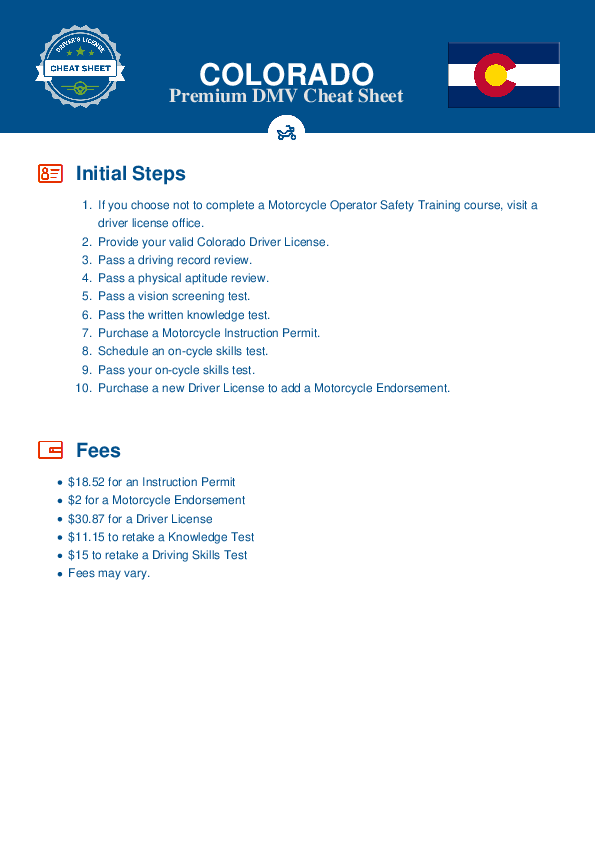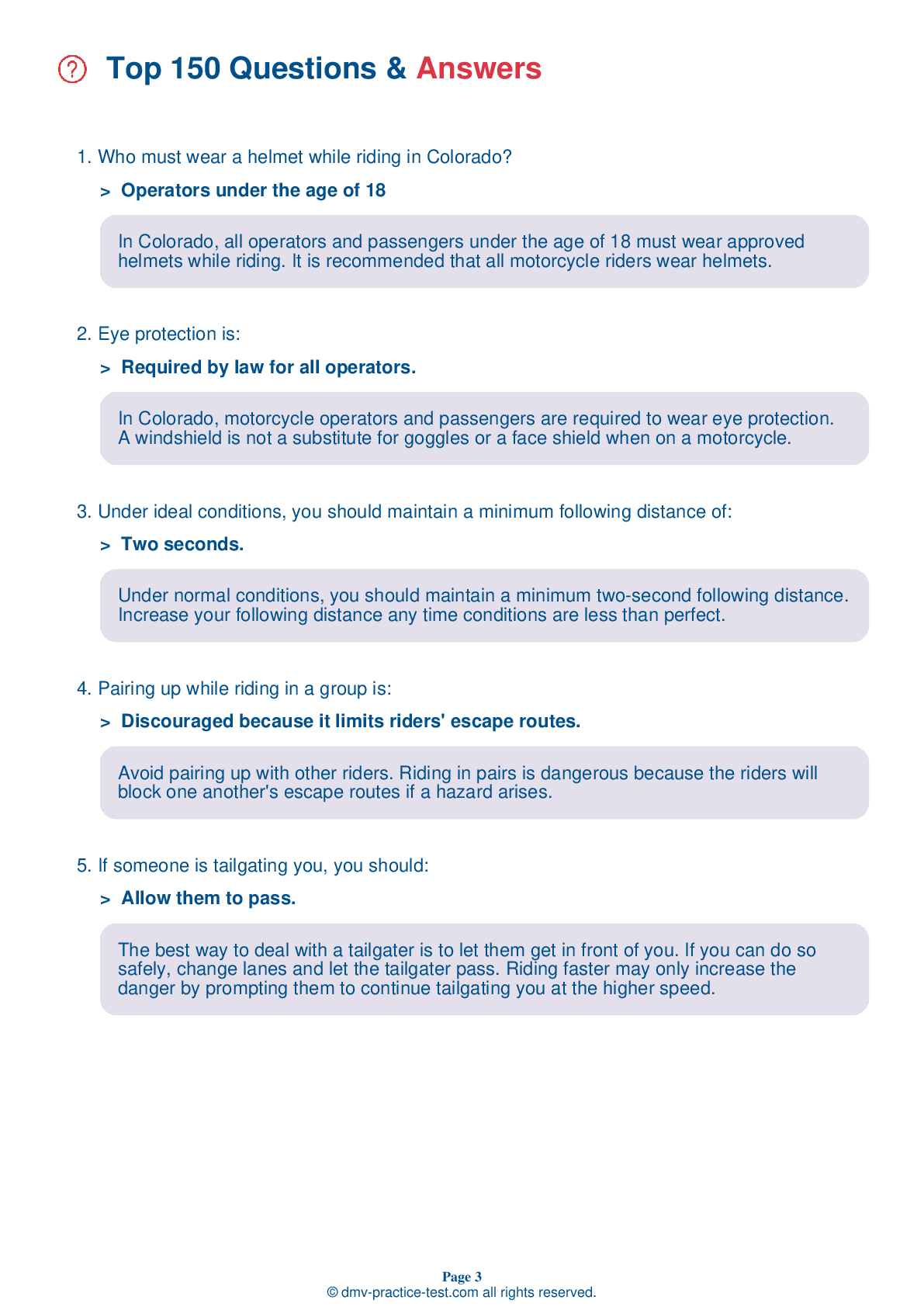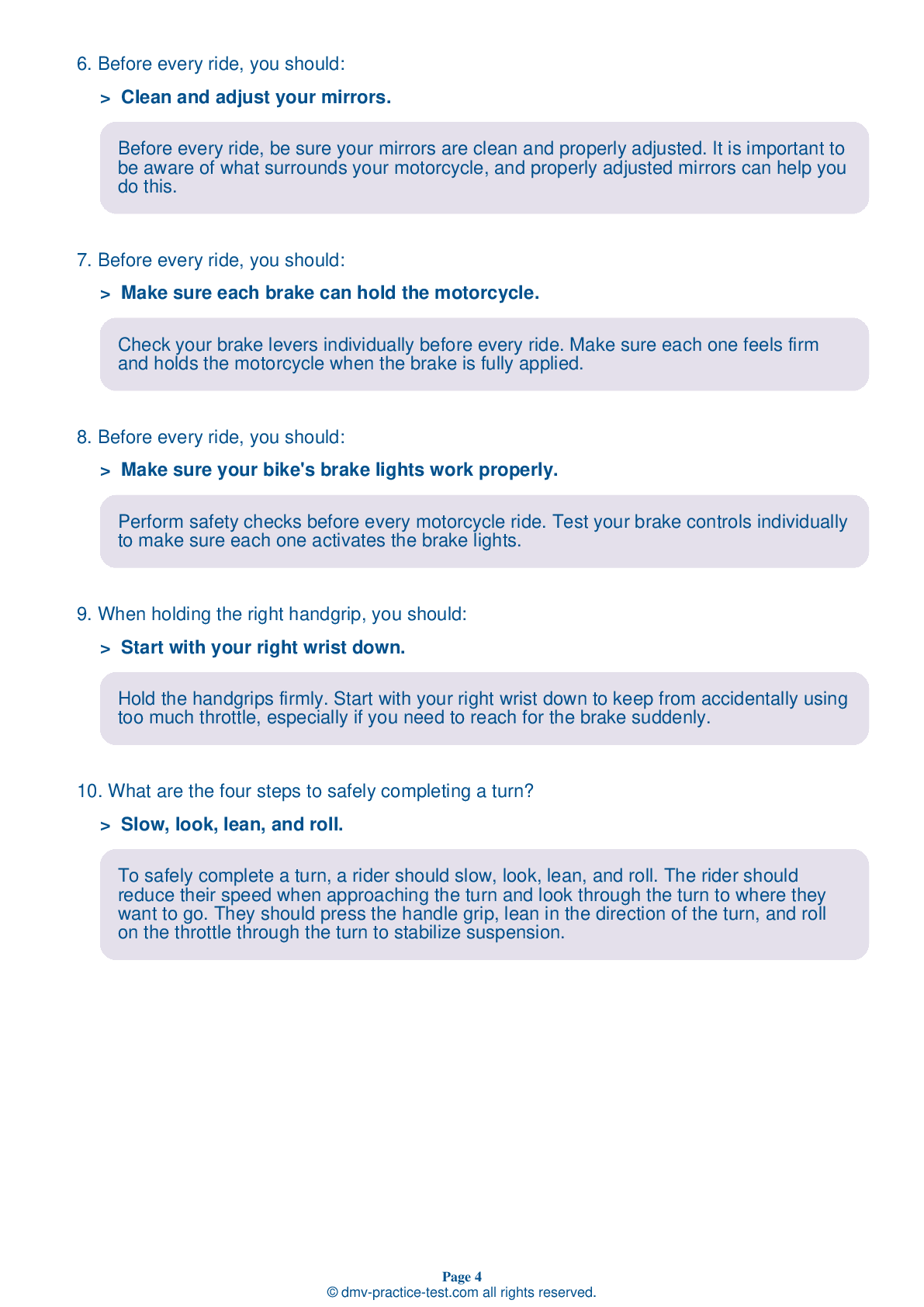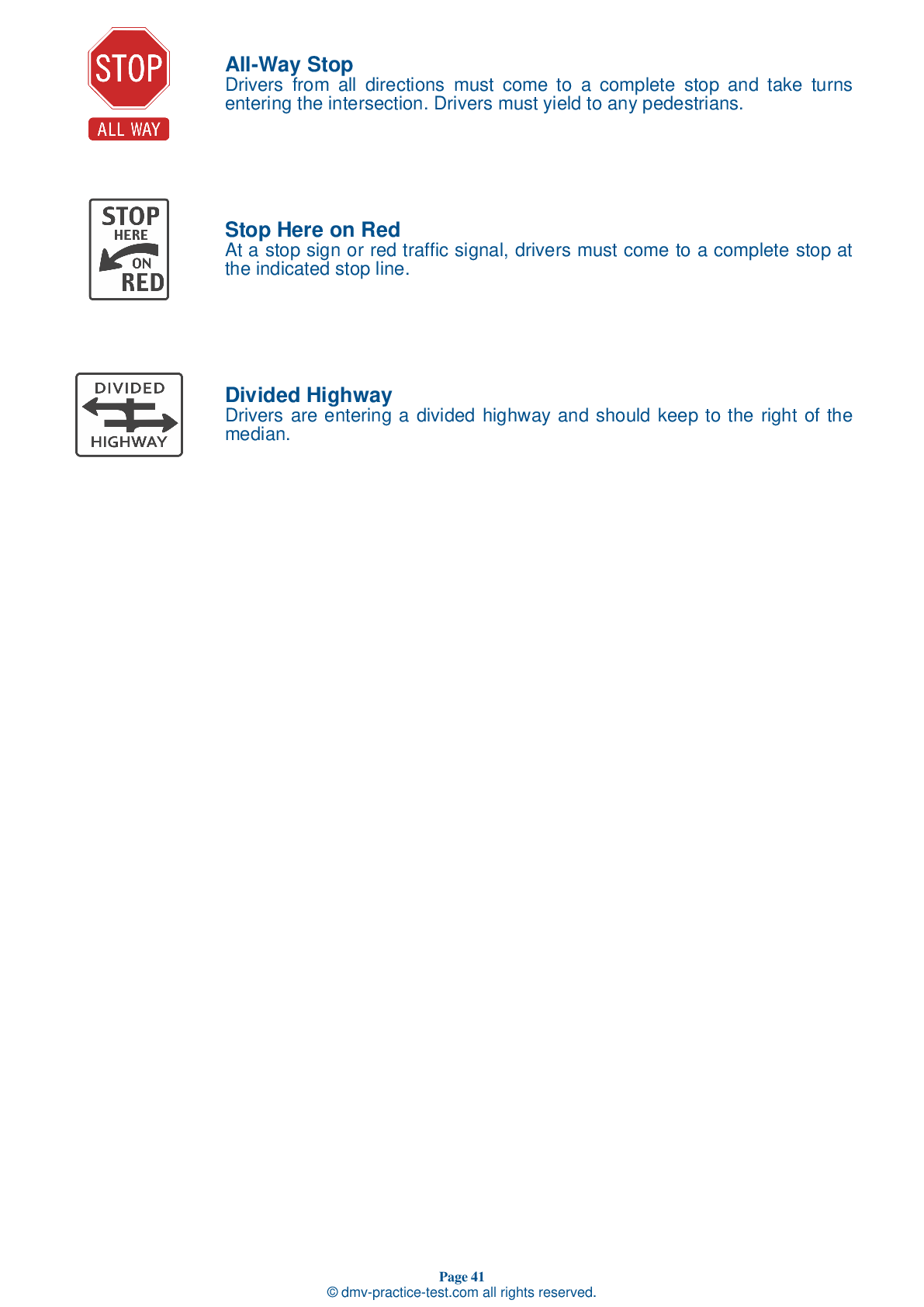Motorcycle Test | License CO 2026 | FREE Online Practice! #10
Take this FREE motorcycle test (license in CO 2026) to check your knowledge of the road rules. To improve your results, download a motorcycle handbook online, study theory, and practice for free on our website. Still worried about how to get a motorcycle license in Colorado in 2026? Check our website for more sample tests, train as much as possible, and boost your grades!
1 . When riding with a passenger, you should:
The added weight of a passenger will affect the handling of your motorcycle. Expect your motorcycle to accelerate more slowly than usual, turn more slowly than usual, and require extra space to come to a complete stop. Ride more slowly, start slowing sooner when approaching a stop, open up a larger space cushion, and wait for larger gaps when crossing, entering, or merging into traffic.
2 . In general, when riding at night, your headlight should:
Using your high beam headlight will help you see and will help other drivers see you. Use your high beam headlight any time you are not riding behind or approaching other vehicles.
3 . The first thing you should do if your throttle becomes stuck is:
If your throttle becomes stuck, try twisting it back and forth several times. If this does not free your throttle, immediately operate the engine cut-off switch and pull in the clutch at the same time.
4 . The best lane position:
There is no single lane position that is always best and no single lane position that should always be avoided. You should vary your lane position in response to changes in riding conditions.
5 . The control for the rear brake is usually located:
The rear brake of a motorcycle is usually operated with the right foot.
6 . When riding at night, a motorcyclist should:
Riding at night can be dangerous because a rider’s ability to see and be seen by fellow motor vehicle operators is limited. It is recommended that riders adjust their riding behavior to compensate for this limited visibility by reducing their speed, maximizing their headlight usage, and increasing their following distance.
See the exact questions that will be on the 2026 Colorado DMV exam.
99.2% of people who use the cheat sheet pass the FIRST TIME
Jeneen was tired of paying $5/gallon. She got herself a scooter that required the motorcycle license. She studyed the motorcycle test cheat sheet and passed her test the next day!
Christopher tells us how he knew nothing prior to obtaining the motorcycle study guide, and he only got one question wrong because he clicked on the wrong answer by mistake.



